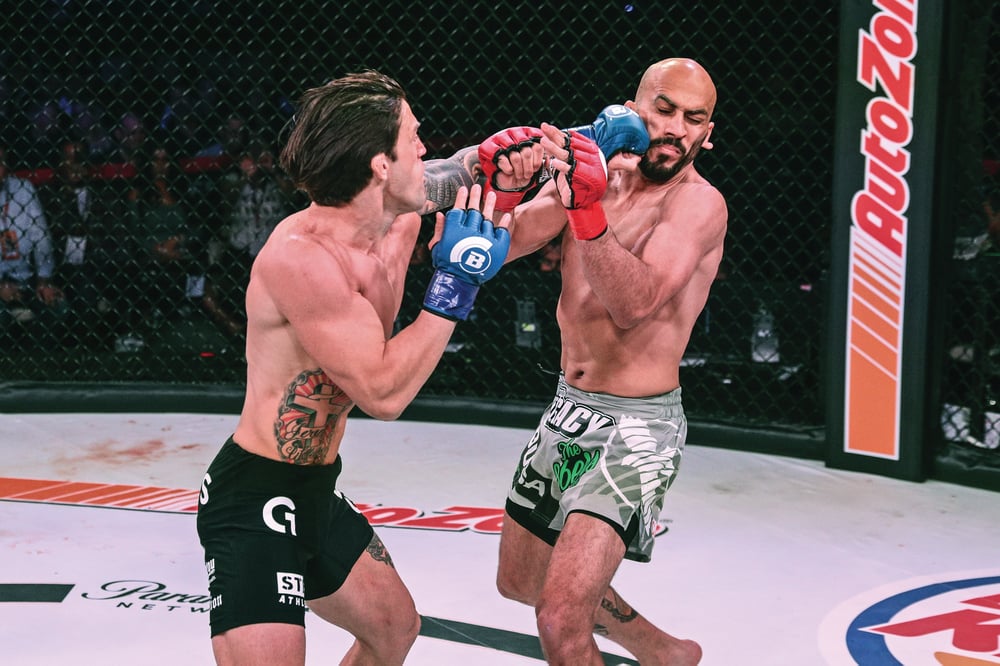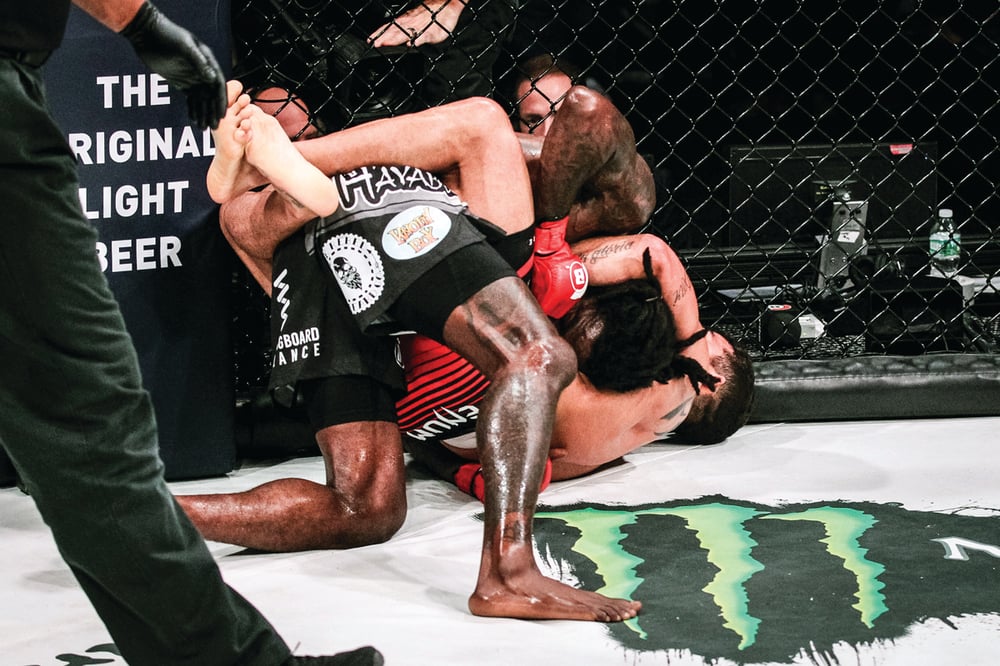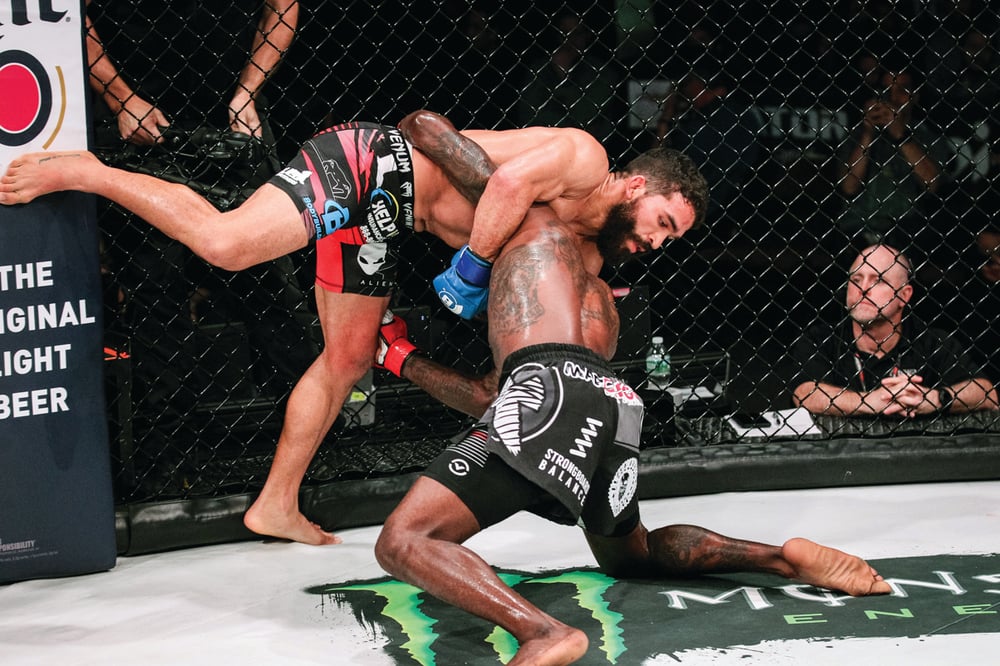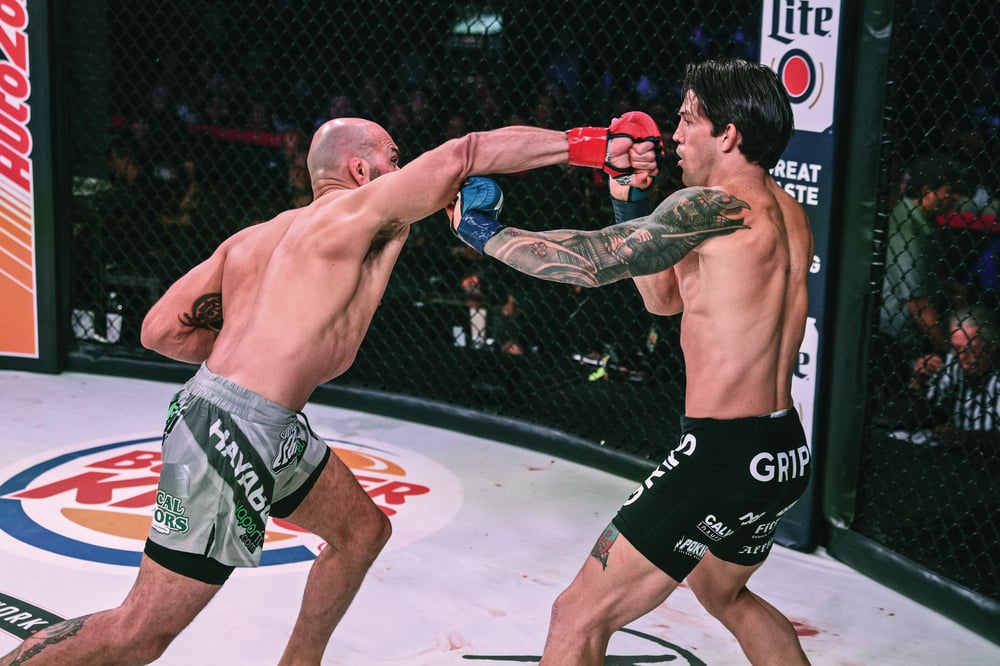
Issue 172
November 2018
Your guide to being a better judge of the next fight you watch. What scores. What doesn't. What to look out for. What most people miss.
THE JUDGING CRITERIA:
Here’s the good news: when you’re scoring a fight, according to Unified Rules of MMA, there’s just one core criterion for you to consider: Effective Striking and Grappling.
The bad news? That thing is hugely multi-faceted and easily misinterpreted.
HOW TO SCORE EFFECTIVE STRIKING:
1: QUANTITY OVER QUALITY
You’re looking for impact before volume. If a strike rocks a fighter, that’s effective hitting. Who’s causing the most damage? Who’s doing the most hurting? Who’s pushing closer to a finish?

2: NUMBER OF STRIKES
Volume matters. But only if both fighters have landed a similar number of impactful strikes.
Spamming away with a shower of light strikes always scores less than a few heavy, damaging shots.

3: LEG KICKS COUNT
Don’t fixate on headshots. As anyone who’s taken one will tell you, leg kicks count. Same goes for body shots. Even the arms are all legal, scoring targets for strikes.
HOW TO SCORE EFFECTIVE GRAPPLING:
1: ADVANCING THE POSITION
You’re looking for anything that leads to effective attack or improved position. Like successfully completed takedowns, reversals, passing the guard, advancing to mount and submission attempts.

2: QUANTITY OVER QUALITY
Remember this? Same rules apply. Takedowns and throws that make a big impact score higher than those which don’t. As do submission attempts which threaten finishes or which drain the other fighter.

3: BACK TO FRONT
You can win a round from your back. It’s even possible to win it by 10-8. Look for bottom fighters who are using a threatening guard to throw up submission attempts and causing damage with strikes.
WHAT IT YOU CAN'T SPLIT 'EM?
If – and only if – you believe neither fighter has the advantage in striking and grappling, think about Effective Aggression and Cage Control.
Who’s moving forward? Who’s bossing the pace, place and position of the fight? The hunter is always scored higher than the hunted.
WHERE'S THE FIGHT HAPPENING?
If most of the round is spent on the feet, you need to weigh effective striking over effective grappling. If most of the fight happens on the mat, you weigh effective grappling first.
SMASHED: 7 MMA SCORING MISCONCEPTIONS:
SOMEONE 'MUST' GET 10 POINTS
MMA took the ‘10-point must system’ from boxing. It doesn’t mean that someone ‘must’ get 10 points. It means that at the end of a round, you give the winner 10 points and the loser must get 9, 8 or 7 points. If the ref has docked a point from either fighter, you deduct a point.
STEALING A ROUND
A round is five minutes long. You must score it based on what happens during that entire time, from buzzer to buzzer. So never be swayed by a fighter trying catch judges’ eyes with a burst of activity or a big takedown in the final 30 seconds.
YOU JUDGE THE FIGHT AS A WHOLE
Wrong. You must score each round as a single, self-contained contest. Think of it as judging three or five completely separate fights. When the buzzer goes, that fight is over.
You score it, you forget it. No going back. No preconceptions going forward.

DEFENSIVE SKILLS ARE SCORED
It’s claimed that boxing’s defensive wizard Willie Pep once won a round without throwing a punch. He would have lost it under MMA rules. You may be dazzled by Dominick Cruz’s slick slips and Jose Aldo’s buttery smooth pivots, they are never scored.
Defence is its own reward.
A BLOODY FACE IS A LOSER'S FACE
Yes, facial damage is a result of effective striking. But don’t be fooled: a busted-up fighter isn’t always a losing fighter. Some fighters are born with kevlar skin (Brian Ortega, say). Others have faces that burst when the wind changes (hello GSP).
KNOCKDOWN = 10 - 8 ROUND
Nope. Unlike in boxing, where a fighter off his feet means something different, MMA knockdowns do not instantly trigger a 10-8. Rewritten in 2017, the Unified Rules state a 10-8 round is where one fighter wins the round by a large margin.
COMMENTATORS KNOW THE CRITERIA
So if you’re scoring a fight from the comfort of your living room, turn off the commentary. You can’t score objectively when someone’s telling you what you’re seeing. And don’t believe for a second that all MMA commentators understand the scoring criteria...

THE SCORECARD: GETTING IT RIGHT
Has one fighter won by a close margin?
Score: 10-9
A close, competitive round that tilts in the favour of one fighter is scored 10-9. This is the most common round in MMA. 10-9 rounds can be desperately close. Just one or two strikes or a big takedown could be the difference. But they have to be competitive. That 9 has to be earned by the losing fighter.
Should the referee have stopped it?
Score: 10-7
If it feels the fight could – or should – have been stopped, you score a 10-7. At its best, it’s Frankie Edgar somehow escaping Gray Maynard’s coup de grâce while being smashed across all eight corners of the octagon at UFC 125.
At its worst, it’s Neil Magny pounding Hector Lombard with over 100 unanswered ground strikes while the referee stares on.
Has one fighter totally dominated?
Score: 10-8
How do you know if a fighter has earned a 10-8 round?
You use the three Ds: Damage. Domination. Duration. If you’ve seen all three – long periods of effective, impactful domination by one fighter – you’ve seen a castiron 10-8 round. If you’ve seen a double-D (and one of them is Damage), you should consider scoring a 10-8.
You really can’t decide who won?
Score: 10-10
If you’re thinking 10-10, think again. A drawn round is possible. But unlikely. Even rarer, in fact, than a 10-7 round. An MMA contest has too many moving parts, too many ways to score an advantage, for an entire round to be exactly even.
Realistically, you’ll only score a 10-10 when a round is cut short in a fight that goes to a technical decision.

SO WAIT WHO WON?
Scorecards can be confusing (just ask Bruce Buffer at UFC 205). When a fight goes to the cards, the decision can go in six different ways. Here’s a handy guide:
UNANIMOUS DECISION:
All three judges agree
Fighter A: XXX
Fighter B:
Draw:
MAJORITY DECISION:
Two judges score for Fighter A, one judge scores a draw.
Fighter A: XX
Fighter B:
Draw: X
SPLIT DECISION:
Split decision
Two judges score for Fighter A, one judge scores for Fighter B.
Fighter A: XX
Fighter B: X
Draw:
MAJORITY DRAW:
Two judges score a draw, one judge scores for a fighter.
Fighter A: X
Fighter B:
Draw: XX
SPLIT DRAW:
2 judges score for a different fighter, 1 judge scores a draw:
Fighter A: X
Fighter B: X
Draw: X
...









